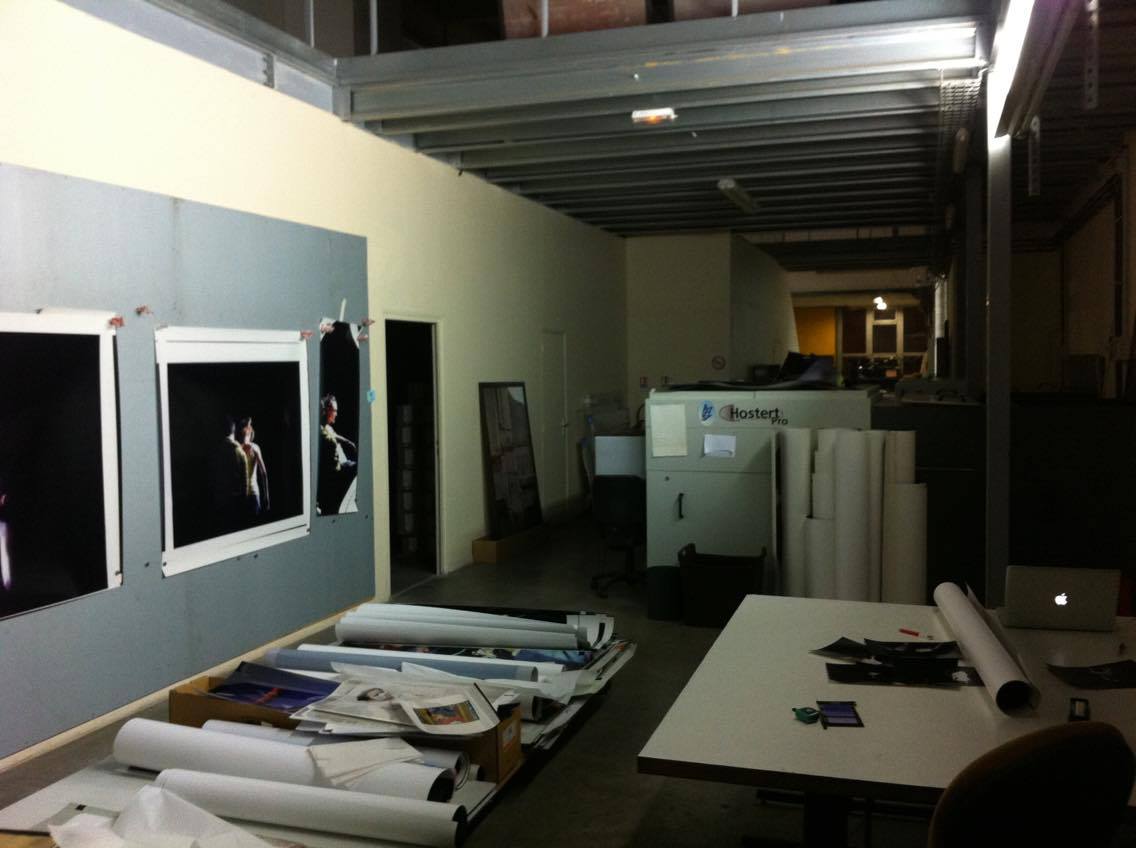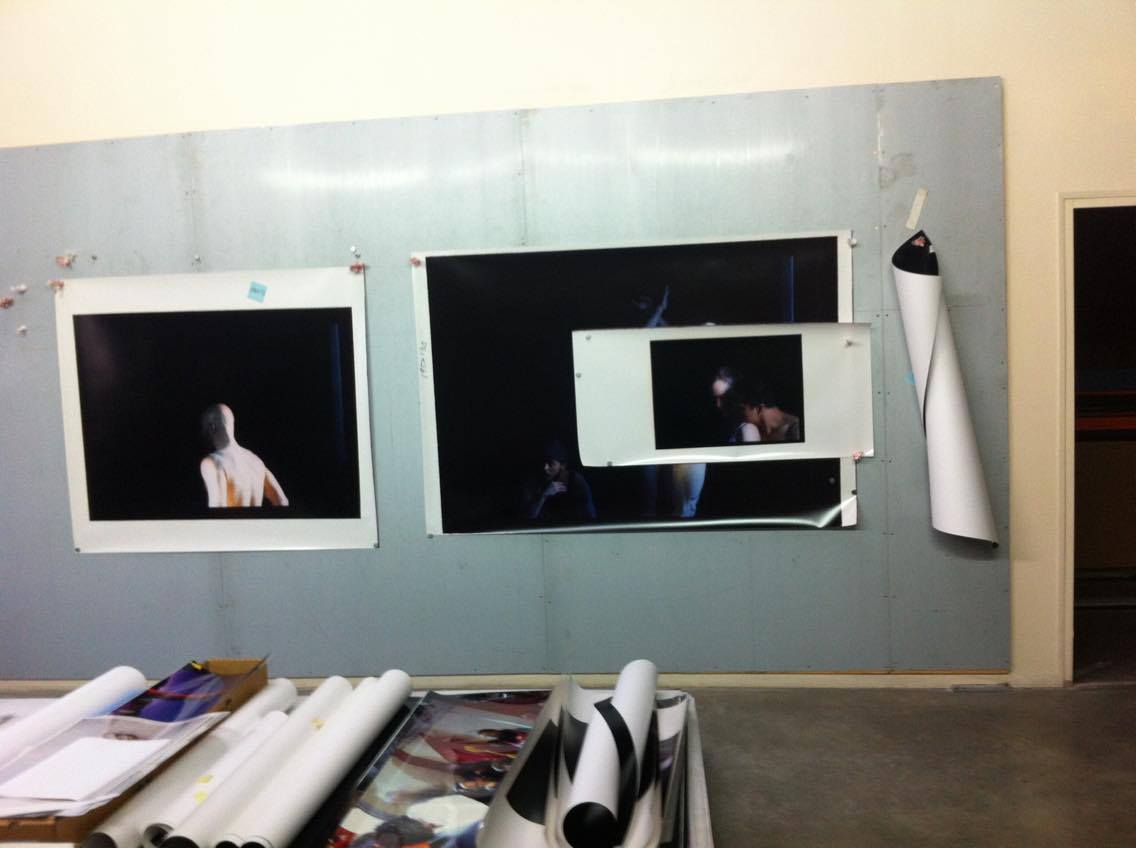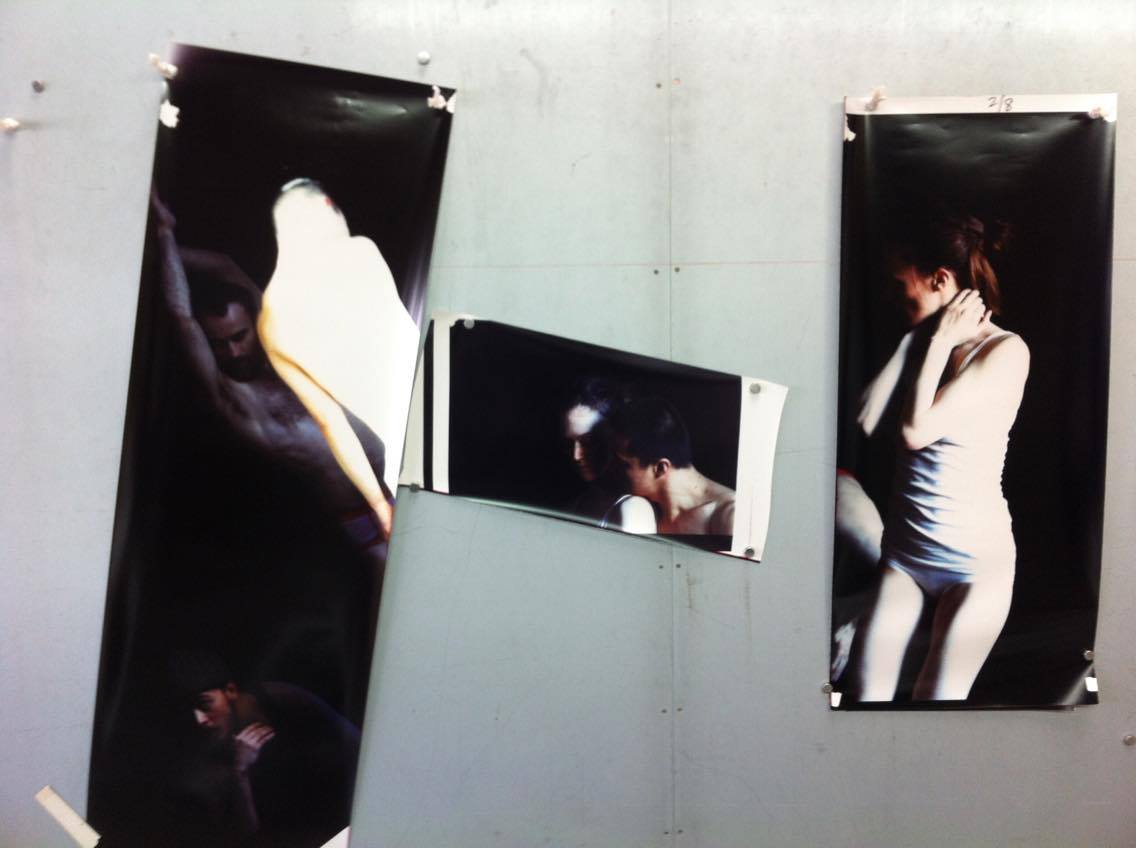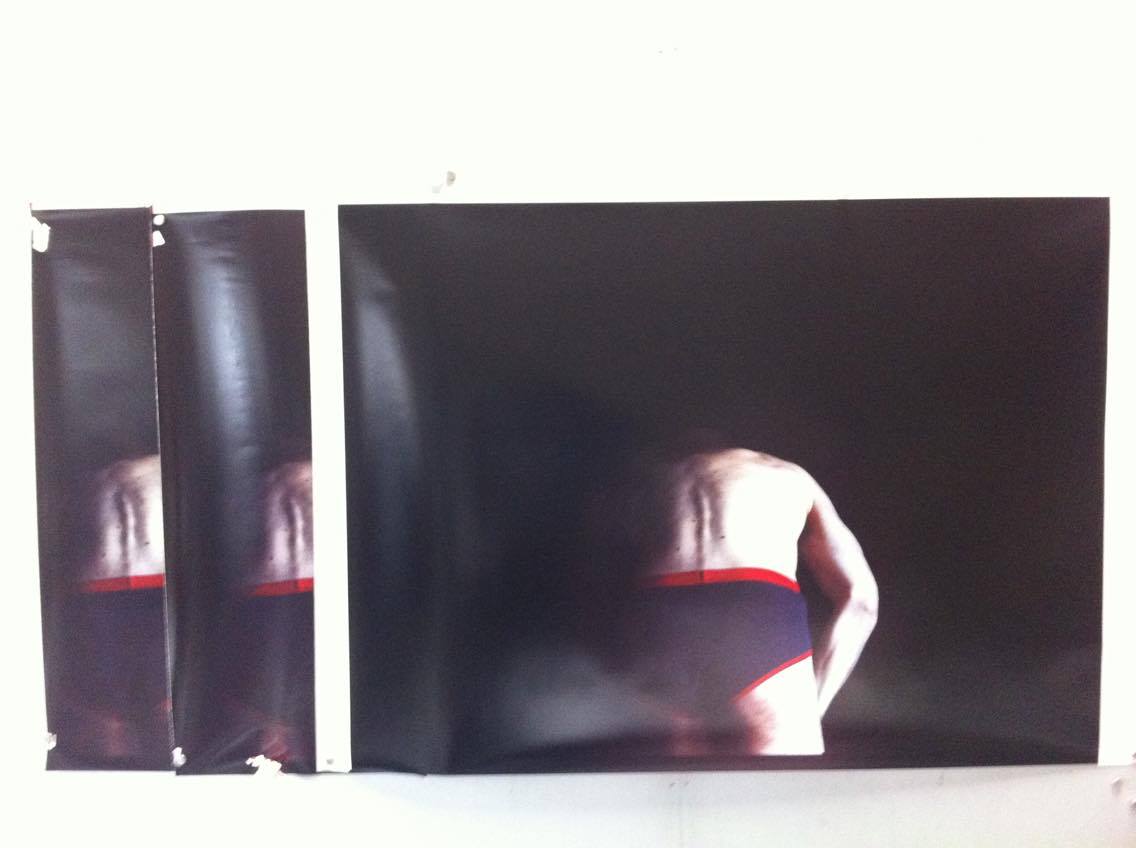IT’S PEOPLE, HOW ABSTRACT CAN IT GET ?
Photographs by Emanuel Gat
"It's people, how abstract can it get?" is a photographic installation which speaks of the priority of the individual experience. Of giving visual form to the emotions which are the objects of experience. All photographs were taken during rehearsals of "The Goldlandbergs" at the Cunningham studio, with the only light source being the natural light coming through the large windows, capturing a group of people in a darkened space engaged in a choreographic moment. The photos are orchestrated into a "performance" timeline and presented within a carefully staged environment of a constantly changing light, and a soundtrack made of excerpts from "The quiet in the land", a radio documentary created by Glenn Gould. Not documentary nor staged, these images emanate an ambiguous sense of one reality taking place within another. Photography not as a tangible proof of the real or as authority that transcend the interpretative, but rather portraits of people which are real just as they are disturbingly beyond the commonplace.
Paintings in all but technique, in the vein of chiaroscuro art, these photographs embrace the immediacy of the body, light, shadow, and texture as subject matter. Gothic in their intense mystery and baroque in their indulgent tangible lust, they are reminders of just how extraordinary and poetic the ordinary can be. how familiar people, in the changing light of the artistic act can become charged and powerfully intimate to us. Between sensuality and degradation, darkness and ominous light, fragility and vulnerability, these moments of suspenseful drama create a mood of lingering uncertainty through the repeated 'gazing away from the viewer' they all share. A beauty not of perfection, but one born out of vulnerabilities, uncertainties, doubts and opportunities.
The contradictions of intimacy and unfamiliarity generate a sense of the fleeting, of a story never fully told, of the transient rather than captured moments of reality or conjured images of staged fantasy. They contain grandeur and opulence, but also evoke moods of silence, introspection and a certain subversiveness.
Installation Shots, Montpellier Danse 2013
Printed at Atelier Choi, Paris
Choi Chung Chun (« Choi ») est né à Hong Kong en 1949 et a commencé son apprentissage en assistant son oncle photographe. L’adolescent qui rêvait de devenir peintre arrive à Paris en 1965 pour s’inscrire à l’école des Beaux-arts. Il a tout juste seize ans. Il en a dix-neuf quand il commence à travailler dans un laboratoire où il se perfectionne en tirage jusqu’à devenir un spécialiste du grand format. Après de longs passages en plusieurs entreprises, Choi décide en 2011 de s’installer en toute indépendance dans un des vastes locaux du complexe industriel CAP18, dans le 18e arrondissement, sous la simple enseigne d’Atelier Choi.
Réputé rare et brillant, Choi y reçoit ses clients photographes avec lesquels il entretient une relation de travail amicale et singulière, propice à la réalisation de tirages argentiques en noir ou en couleur, exécutés par un homme seul dans le gigantisme des formats et le volume d’expositions entières. Semblable aux grands artisans qui dans les pages de l’histoire de l’art servent le génie, Choi ne se repose d’un travail que par le commencement d’un nouveau projet.
Presse
« Dans l'expo « It's People, How Abstract Can It Get ? », Gat ne fait pas des photos de danse mais de gens emportés par leur danse. Au plus proche de la réalité du plateau, les clichés révèlent ce qui ne peut apparaitre a l'œil nu dans un spectacle le vide, la solitude, la concentration, l'hésitation et la détermination. »
Marie-Christine Vernay - Libération, 2013
« Ses photos ciselées dans l'or tendre de la chair et du soleil font l'objet d'installations à la chapelle et la cave de l'Agora. L'une et l'autre évoquent l'intimité dans une nuit de velours, bruissante de pas ou de cantiques. Immobile mais hypnotique, c'est l'autre chant de la danse. »
Ariane Bavelier - Le Figaro, 2013
« Les photos ont une luminosité tout à fait particulière qui leur confère un aspect plus proche de la peinture flamande que de n’importe quel travail photographique. (…) Au final, ces photographies n’ont absolument aucun point commun avec ce que l’on considère comme une « photo de danse ». Rien à voir. (…) Ce sont des épreuves sans finalité médiatique ou utiles, sans volonté de reproduire ni d’illustrer. Elles dévoilent l’essence de la danse, soit ce qui échappe toujours puisqu’elle est l’art des interstices et des intervalles, ce qui passe, ce qui prélève du temps dans l’espace. Cette installation invite le spectateur à percevoir, à s’approprier une autre approche de la danse, plus intime, plus secrète et plus proche de la démarche du chorégraphe, avec la part d’énigme que cela suppose. »
Agnès Izrine / Thomas Hahn - Danser Canal Historique, 2013
« In a pitch-dark space, 10 or so images of rehearsals for The Goldlandbergs are slowly, gradually illuminated; taken in a black studio with natural light, they show us performers who seem to emerge from the shadows, their features or the line of their neck and shoulders captured in clair-obscur with a delicacy reminiscent of Dutch Master painting. »
Laura Cappelle - Financial Times, 2013
« Des rayons lumineux tombent sur des silhouettes qui semblent sortir directement d’une peinture de chiaroscuro. Cependant il ne s’agit pas de personnages bibliques, mais des danseurs de Gat, photographiés par le chorégraphe lui-même. Le dos blanc du coréen Pansun Kim tranche tel celui d’un moine sur le fond de la nuit. D’autres sembles animés par une force supérieure et peints à l’huile. Les solistes, les couples restent seuls avec eux-mêmes, sans référence aucune à une parabole, ou à une chorégraphie. Qu’une parfaite illusion de Renaissance ou de Baroque puisse toutefois être créée réside dans l’expérience considérable de Gat d’un côté et un heureux hasard de l’autre. »
Thomas Hahn - Tanz, 2013
“The still photographs of his dancers that Gat took during rehearsals are shining in the night dark space of the church like contemporary re-creations of the old masters, a children’s choir is singing Christian chorals. Later we can hear the same transmission for “The Goldlandbergs”, in which Gat assembles both, the well known recordings of Glenn Gould’s “Goldberg Variations” and a broadcasting reportage the pianist did about a Mennonite village in the north of the country. Bach’s Variations are the counterpoint to the everyday life situations of the members of the sect, thereby loosing all their exotic liberty. The variable lines and crowds of people that Gat piles up vertically, come to reflect the structure and mood of the music in individual variations. The hopefulness in the old and new Emanuel Gat can once again be seen in the way he not only knows how to use and widen the spatial dimensions variously, but also in the way he reflects visibly and tangibly timing and temporal, historical dimensions.”
Eva Elisabeth Fusher




































